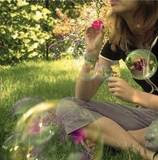The poem "Barbie Doll", by Marge Piercy, brings to light the pressures placed upon women and their bodies. The Barbie doll is an image of synthetic, impossible, perfection.
Even though, as someone pointed out in class, women have made tremendous strides against discrimination and bias views based on gender, women still face pressures even today. At different points in time there were specific ideals of beauty that society as a whole placed upon women. With the changing of said times come the deletion, but also addition, of beauty ideals. Even in America, the land of the free, women, and just people in general, feel unsatisfied with themselves because they do not fit into what is considered normal. Piercy's other poem: "What are big girls made of?" brings up the notion that such discrimination against women's bodies, and bodies in general, is still (unfortunately) relevant. She points out the fact that in the past and up to today, women's bodies have been under the microscope:
"the 18th century:
century of the ultimate lady
fantasy wrought of silk and corseting.
Paniers bring her hips out three feet
each way, while the waist is pinched
and the belly flattened under wood."
Then we fast forward to modern times ---------->
"How superior we are now: see the modern woman
thin as a blade of scissors.
She runs on a treadmill every morning,
fits herself into machines of weights
and pulleys to heave and grunt,
an image in her mind she can never
approximate, a body of rosy
glass that never wrinkles,
never grows, never fades. She
sits at the table closing her eyes to food
hungry, always hungry:
a woman made of pain."
Even if you may have heard it over and over again, and are frankly sick of people playing any sort of card: the race card, or the gender card... it's still there. If we have made such "strides" into becoming more intelligent and more aware of biases, then we wouldn't be finding teenage girls becoming walking skeletons.... we wouldn't be seeing magazines plastered with article titles such as: "Flat Abs, Firm Butt, Lean Thighs", "Get a Sexy Body".
Piercy uses the straight facts in a witty tongue. She doesn't hype it up into fancy language to make the poem "prettier" or more "poetic". I absolutely love these two poems by Piercy. She has a message to convey and she takes her own spin on it and it is very enticing.
"If only we could like each other raw.
If only we could love ourselves
like healthy babies burbling in our arms." ~ M. Piercy
